Discover the power of Adobe Substance 3D for creating stunning, realistic 3D assets. This comprehensive suite empowers artists to craft high-quality materials, textures, and models efficiently, ideal for gaming, film, and design industries. With practical guides and interactive tools, Substance 3D simplifies the creation process, making it accessible to both beginners and professionals. Dive into a world of limitless creativity and transform your 3D projects with precision and realism.
Overview of Adobe Substance 3D Suite
The Adobe Substance 3D Suite is a powerful collection of tools designed for creating high-quality 3D assets. It includes Painter for texturing, Designer for material creation, Sampler for generating materials from photos, and Stager for scene rendering. These tools empower artists to craft realistic textures, materials, and models efficiently. The suite integrates seamlessly with other Adobe applications, making it ideal for 3D design, gaming, and film industries. Its user-friendly interface and advanced features cater to both beginners and professionals, streamlining workflows and enhancing creativity.
Importance of Realistic Asset Creation in 3D Design
Realistic asset creation is crucial for immersing audiences in 3D environments, whether in gaming, film, or architectural visualization. It enhances the believability and emotional impact of designs, making them more engaging. High-quality textures, materials, and models convey intricate details, ensuring professional-grade results. Industries rely on realistic assets to communicate ideas effectively. Tools like Adobe Substance 3D Painter and Designer streamline this process, enabling artists to craft detailed, authentic assets that elevate their projects to new heights of visual fidelity and storytelling potential.
Getting Started with Adobe Substance 3D Painter
Begin your journey with Substance 3D Painter, a powerful tool for texturing and editing 3D assets. Learn to set up your workspace, work with layers, and bake textures to create professional-grade materials and models. This user-friendly software is perfect for both beginners and professionals, offering robust features to enhance your 3D design workflow and bring your creative vision to life with precision and detail.
Setting Up Your Workspace in Substance 3D Painter
Customize your Substance 3D Painter workspace to streamline your texturing workflow. Arrange panels like the Properties, Shelf, and 3D View to suit your needs. Dock and undock windows for optimal screen space. Set up your brush library and material presets for quick access. Enable shortcuts and preferences to enhance efficiency. A well-organized workspace ensures faster navigation and improved productivity, allowing you to focus on creating detailed, realistic textures for your 3D assets with precision and ease.
Understanding Layers and Masks in Substance 3D Painter
Leverage layers and masks in Substance 3D Painter to achieve precise control over textures. Layers allow for non-destructive editing, enabling you to stack and blend materials independently. Masks provide detailed control over texture application, letting you isolate specific areas. Combine these tools to create complex, realistic textures with ease. By organizing your workflow with layers and refining details with masks, you can achieve professional-grade results in your 3D asset creation process efficiently and effectively.
Basic Texturing Techniques in Substance 3D Painter
Master the fundamentals of texturing in Substance 3D Painter by applying base materials, adding detail layers, and refining with smart materials. Use brushes and masks to paint intricate details, ensuring seamless blending. Experiment with texture resolution and normal mapping for depth; Organize your workflow with layers to maintain non-destructive edits. These techniques empower you to create realistic, high-quality textures efficiently, laying the foundation for professional-grade 3D asset creation.
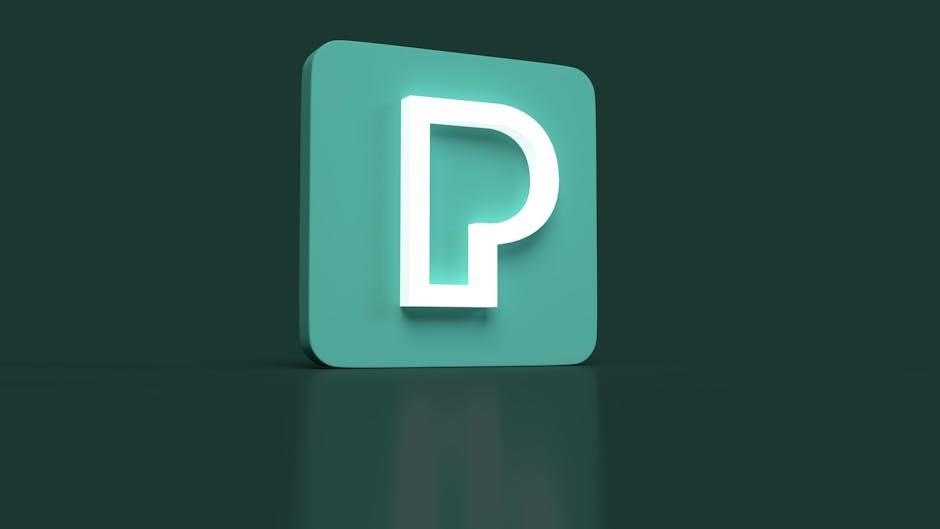
Baking Textures in Substance 3D Painter
Baking textures in Substance 3D Painter transfers high-poly details to low-poly models, enhancing realism while optimizing performance. Use the Bake Toolset to generate normal, ambient occlusion, and curvature maps. Adjust settings to refine details and ensure seamless texture application. This process is crucial for creating lightweight yet visually rich assets for gaming and real-time applications, ensuring efficiency without compromising quality.
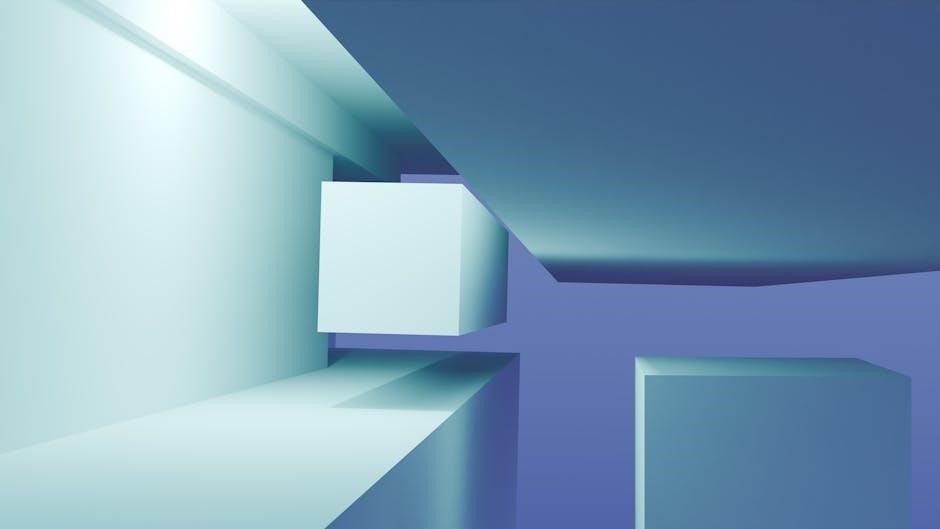
Advanced Material Creation with Adobe Substance 3D Designer
Adobe Substance 3D Designer empowers artists to craft complex, customizable materials and textures. Utilize node-based workflows to build detailed, realistic surfaces, enhancing 3D projects with precision and creativity.
Adobe Substance 3D Designer is a powerful tool for creating custom materials and textures. It offers a node-based workflow, enabling artists to build complex textures from scratch. Ideal for both beginners and professionals, Substance 3D Designer allows users to craft realistic surfaces, from subtle patterns to intricate details. Its versatility makes it a cornerstone in industries like gaming, film, and product design, where high-quality materials are essential for immersive experiences.
Creating Custom Materials and Textures
Substance 3D Designer enables artists to craft unique, high-quality materials and textures from scratch. Using its node-based workflow, users can combine patterns, gradients, and effects to create intricate, realistic surfaces. From metallic alloys to organic fabrics, the possibilities are vast. Procedural techniques allow for non-destructive editing, ensuring flexibility and precision. Artists can also import real-world images to generate custom textures, making it a versatile tool for achieving detailed, photorealistic results in various industries, including gaming, film, and product design.
Using Nodes in Substance 3D Designer
Substance 3D Designer’s node-based workflow allows artists to create complex materials and textures by connecting and manipulating nodes. These nodes represent mathematical operations, patterns, and effects, enabling the creation of detailed, realistic surfaces. Users can combine noise, gradients, and procedural patterns to achieve unique results. The non-destructive workflow lets artists experiment freely, adjusting parameters without losing previous work. This flexible system empowers designers to craft custom, high-quality materials efficiently, making it a cornerstone of realistic asset creation in Substance 3D.
Procedural Modeling in Substance 3D Designer
Procedural modeling in Substance 3D Designer enables artists to generate detailed 3D elements using algorithms and node-based systems. This method automates the creation of complex patterns, textures, and shapes, allowing for infinite variations. With tools like Splines and Paths, users can craft intricate designs and extrude them into 3D. The non-destructive workflow ensures flexibility, letting artists tweak parameters without losing previous work. This approach streamlines the creation of realistic, high-detail assets, making it a powerful tool for achieving precise and unique 3D models efficiently.
Working with Adobe Substance 3D Sampler
Substance 3D Sampler revolutionizes material creation by generating realistic textures from real-life photos. Its AI-driven tools streamline the process of crafting and exporting custom materials for 3D projects.
Generating Materials from Real-Life Photos
Adobe Substance 3D Sampler enables artists to create realistic materials by scanning and processing real-life photos. Using AI-powered tools, you can generate high-quality, tileable textures and export them for use in 3D projects. This feature is particularly useful for game design, architectural visualization, and product modeling. By importing images and leveraging advanced algorithms, Sampler streamlines the process of transforming 2D references into 3D-ready materials, saving time while ensuring authenticity and detail.
Creating and Exporting Materials in Substance 3D Sampler
Substance 3D Sampler allows artists to craft and export materials seamlessly. By importing real-life photos, users can generate tileable textures using AI-driven tools. The intuitive interface enables quick adjustments to texture properties. Export options include PBR maps and customizable resolutions, ensuring compatibility with game engines and 3D software. This streamlined process accelerates material creation, making it ideal for 3D modeling, game design, and architectural visualization projects, while maintaining high-quality, realistic results.
Using AI Tools in Substance 3D Sampler
Substance 3D Sampler leverages AI to revolutionize material creation. Users can generate high-quality, realistic materials from real-life photos automatically. AI-powered tools enable quick extraction of textures, patterns, and normals, saving time and effort. Advanced algorithms ensure detailed and accurate results, while intuitive controls allow for fine-tuning. This feature is particularly useful for creating immersive 3D assets, offering a blend of efficiency and creativity for designers and artists.
By harnessing AI, Sampler streamlines workflows, enabling rapid iteration and experimentation. Artists can focus on creative expression while the AI handles technical complexities, making it an indispensable tool for modern 3D design and asset creation.
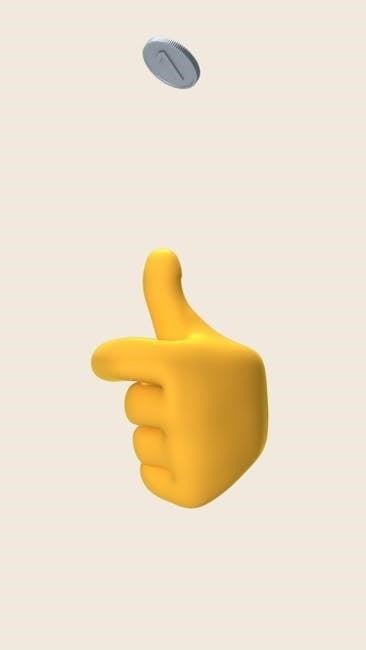
Lighting and Rendering in Adobe Substance 3D Stager
Master realistic lighting and rendering techniques in Substance 3D Stager. This powerful tool allows artists to craft photorealistic scenes with precise control over lighting, shadows, and materials, ensuring stunning visual outcomes for 3D assets.
Setting Up Scenes in Substance 3D Stager
Setting up scenes in Substance 3D Stager involves importing 3D assets, adjusting lighting, and fine-tuning materials. Start by importing models in formats like FBX or OBJ. Use the intuitive interface to place assets, ensuring proper scaling and positioning. Adjust lighting types—directional, point, or environment—to achieve desired moods. Apply materials from Substance 3D Painter or Sampler, leveraging AI-generated textures for realism. Position cameras strategically, experimenting with focal lengths and compositions. Optimize rendering settings for quality and performance, utilizing the Substance 3D Asset Library for additional resources. This step-by-step approach helps create photorealistic scenes efficiently.
Lighting Techniques for Realistic Renders
Mastering lighting in Substance 3D Stager is key to achieving photorealistic renders. Use a combination of directional, point, and environment lights to mimic real-world setups. Apply the three-point lighting technique—key, fill, and backlight—to create depth and dimension. Adjust light intensity, color temperature, and shadows for natural results. Experiment with HDR maps for dynamic environments. Position lights to accentuate textures and materials, ensuring realistic interactions. Fine-tune settings to balance contrast and illumination, enhancing the overall visual fidelity of your scenes.
Rendering Scenes in Substance 3D Stager
Substance 3D Stager simplifies the rendering process, enabling artists to produce photorealistic images efficiently. Use pre-built templates or custom setups to render scenes with precision. Adjust resolution, sampling, and anti-aliasing for optimal quality. Utilize the integrated IBL (Image-Based Lighting) system for realistic environmental illumination. Experiment with depth of field, motion blur, and other effects to enhance realism. Review and refine render settings to achieve desired visual outcomes, ensuring your 3D assets stand out in professional-grade renders.
Optimizing Renders for Performance
Optimize your renders in Substance 3D Stager by balancing quality and performance. Use lower resolution settings for draft renders and higher resolutions for final outputs. Adjust anti-aliasing samples to reduce noise without sacrificing detail. Enable denoising for faster rendering times while maintaining visual fidelity. Simplify scenes by hiding unnecessary assets and use proxy models for complex elements. Utilize batch rendering to process multiple scenes efficiently. These techniques ensure smooth workflows and high-quality results, making your rendering process both efficient and effective for professional-grade outcomes.
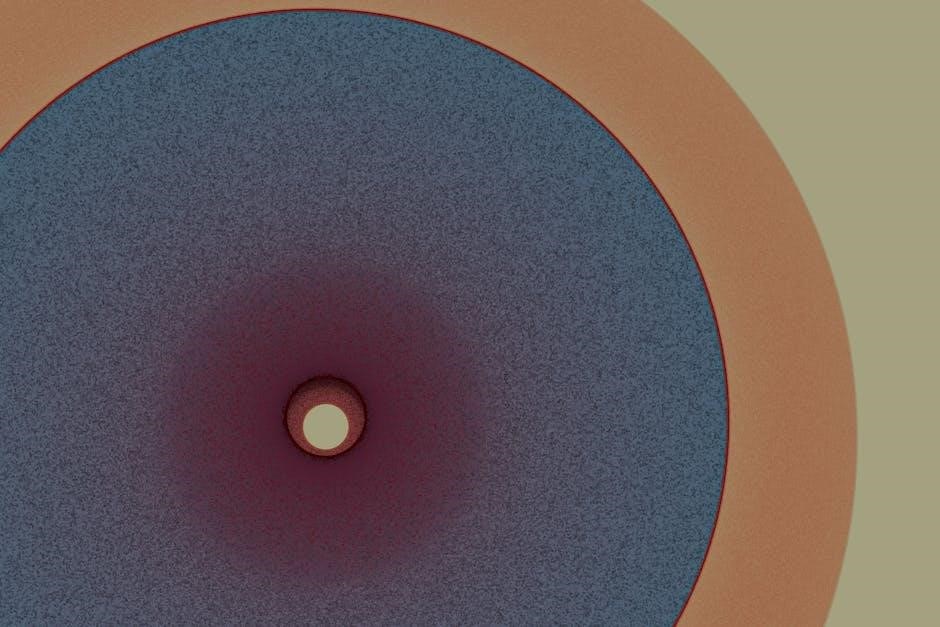
Utilizing the Substance 3D Asset Library
Access a vast library of pre-made materials and models with Adobe Substance 3D, streamlining your workflow with customizable assets that enhance your creative projects.
Navigating the Substance 3D Asset Library
The Substance 3D Asset Library offers a user-friendly interface to explore and download high-quality materials and models; Artists can quickly search, filter, and preview assets by categories, tags, or popularity. With a vast collection of customizable resources, the library streamlines workflows, saving time and enhancing creativity. Users can easily organize and manage assets, ensuring efficient access to the tools needed for realistic asset creation. This robust resource hub is essential for 3D designers seeking professional-grade materials and textures.
Customizing and Combining Assets
Substance 3D allows seamless customization and combination of assets to meet specific project needs. Users can import and modify existing materials, textures, and models from the Asset Library, adjusting parameters like color, roughness, and normals. This flexibility enables the creation of unique, tailored assets. Additionally, combining multiple assets into a single project streamlines workflows, allowing artists to build complex scenes with ease. Customization ensures consistency and realism, making it a powerful feature for 3D design and asset creation.
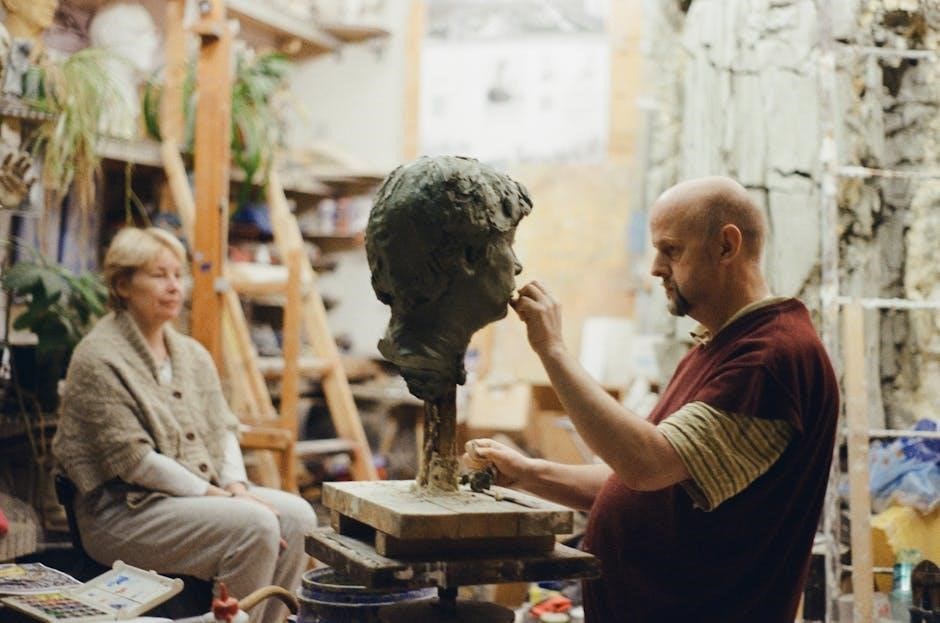
Exporting Assets for Use in Other Applications
Substance 3D enables seamless export of assets in various formats, ensuring compatibility with game engines, 3D printers, and other software. Users can export textures, materials, and models in formats like FBX, OBJ, and Unity-ready assets. The process allows for optimization of resolution and polygons, ensuring assets perform well in their intended applications. This flexibility makes Substance 3D assets versatile for gaming, animation, and industrial design, while maintaining high-quality details and realism across platforms.
Exporting and Implementing Your Assets
Substance 3D allows seamless export of assets in formats like FBX, OBJ, and Unity-ready files, ensuring compatibility with game engines, 3D printing, and VR applications while maintaining quality and performance.
Exporting Assets from Substance 3D
Substance 3D offers flexible export options, allowing artists to transfer assets seamlessly to various applications. Users can export textures, materials, and 3D models in formats like FBX, OBJ, and Unity packages. The process ensures compatibility with game engines, 3D printing, and VR projects. Advanced settings enable optimization for performance while maintaining visual fidelity. This versatility makes Substance 3D assets adaptable to diverse workflows, streamlining the transition from creation to implementation in professional pipelines.
Preparing Assets for Game Engines
Optimizing Substance 3D assets for game engines involves adjusting texture resolutions and polygon counts to ensure performance. Exporting in formats like FBX or OBJ ensures compatibility with Unity and Unreal Engine. Baked textures, including normal and specular maps, enhance lighting accuracy. Additionally, using Substance 3D plugins for Unity streamlines asset integration, reducing manual adjustments and ensuring assets render faithfully in-game environments while maintaining visual quality and efficiency.
Integrating Assets into 3D Printing Workflows
Preparing Substance 3D assets for 3D printing involves exporting models in formats like STL or OBJ, ensuring high-resolution details. Clean up the mesh by removing overlapping faces and unnecessary textures. Optimize polygon counts to balance detail and printability. Adjust scale settings to match real-world dimensions. Use Substance 3D tools to bake textures for uniform surface finishes. Finally, export the asset with materials layered for multi-color printing compatibility, ensuring seamless integration into 3D printing workflows for physical production.
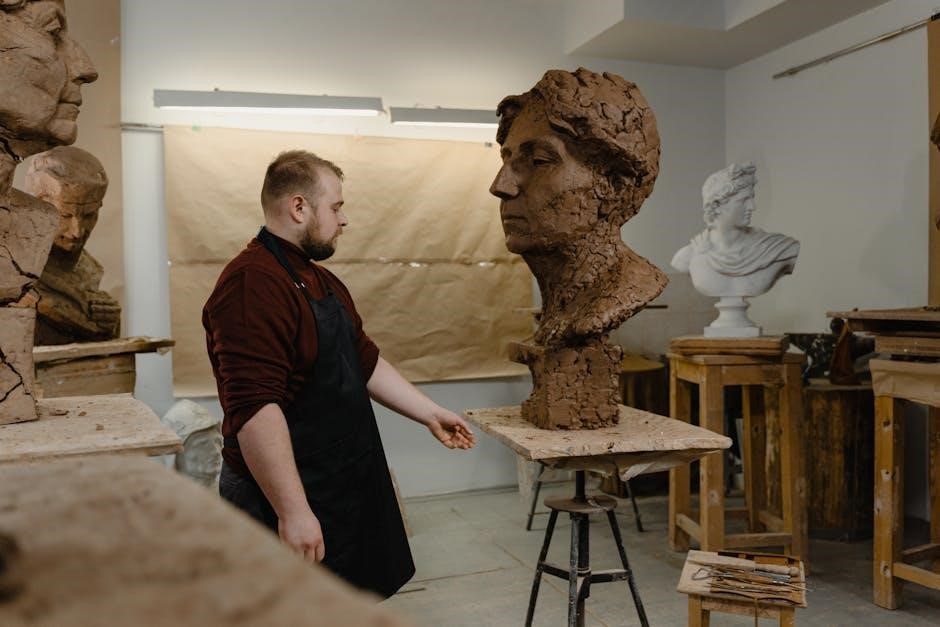
Advanced Techniques and Tips
Master advanced techniques like PBR, smart materials, and procedural modeling to enhance realism. Leverage AI tools for efficient texture creation and refine your workflow with non-destructive methods. Elevate your 3D asset creation with expert tips tailored for Substance 3D users, ensuring professional-grade results in every project.
Mastering PBR (Physically Based Rendering) in Substance 3D
Mastering PBR in Substance 3D involves creating realistic materials by simulating real-world physics. Use albedo, metallic, and roughness maps to define material properties. Substance 3D Painter and Designer provide advanced tools for crafting detailed, physically accurate textures. By leveraging these tools, artists can achieve lifelike reflections, shading, and lighting interactions. Properly calibrated PBR materials enhance realism in 3D scenes, making them essential for professional-grade assets in gaming, film, and design projects.
Creating Non-Destructive Workflows
Master non-destructive workflows in Substance 3D to maintain flexibility and creativity. Use layers, masks, and parametric tools to experiment without altering original data. This approach allows for seamless iteration and refinement, preserving data integrity. Node-based systems in Designer and Painter enable modular adjustments, while version control ensures easy rollback. Non-destructive workflows enhance collaboration and organization, making it easier to manage complex projects and maintain consistency across your 3D asset pipeline. This method is essential for professional-grade asset creation and efficient project management.
Using Advanced Brushes and Smart Materials
Elevate your texturing process with Substance 3D’s advanced brushes and smart materials. These tools enable precise, detailed work, allowing you to create complex textures and weathering effects effortlessly. Smart materials adapt to your model’s geometry, ensuring realistic outcomes. From organic surfaces to intricate metallic details, these features streamline your workflow, enabling you to achieve professional-grade results efficiently. Leverage these powerful resources to enhance your creative freedom and produce stunning, realistic assets with minimal effort and maximum precision.
Leveraging AI for Asset Creation
Adobe Substance 3D integrates AI tools to revolutionize asset creation, enabling artists to generate highly detailed materials and textures from real-life photos. With AI-powered features, you can automate repetitive tasks, such as texture generation and material customization, saving time while maintaining realism. Substance 3D Sampler uses AI to transform images into 3D assets seamlessly, while advanced algorithms enhance procedural modeling. These tools empower creators to focus on artistic vision, ensuring efficient and high-quality results in their workflows.
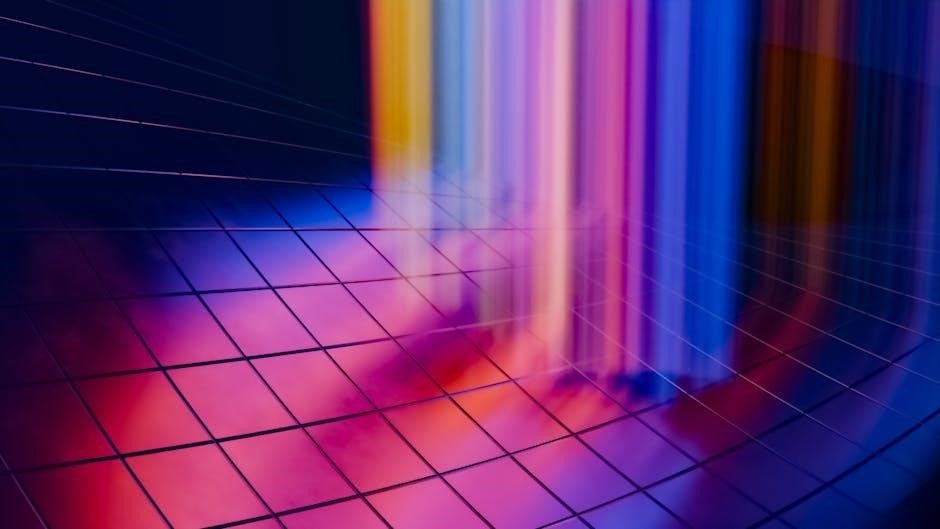
Case Studies and Portfolio Development
Explore real-world examples of realistic asset creation using Adobe Substance 3D. Learn how to build a professional portfolio showcasing your 3D design skills and creativity, enhancing career prospects in the industry.
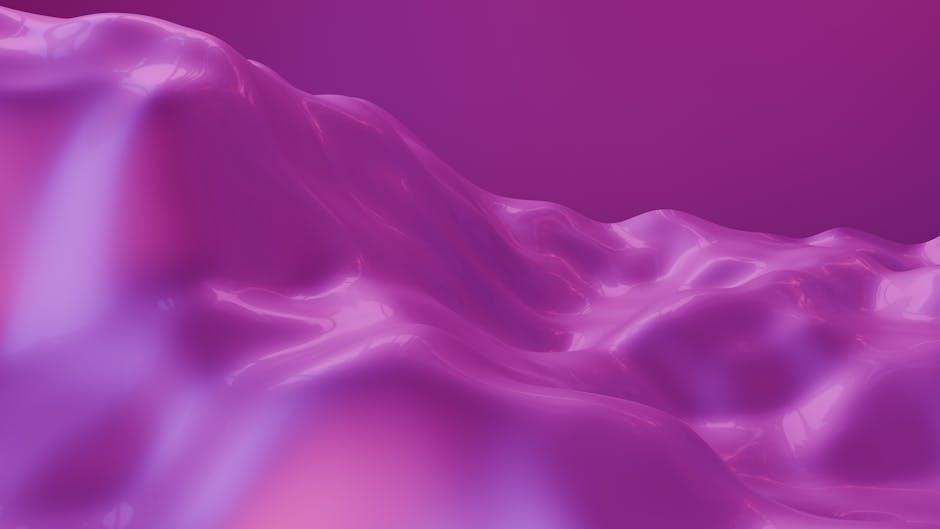
Real-World Examples of Asset Creation
Discover how artists use Adobe Substance 3D to craft realistic assets for gaming, film, and product design. From detailed metallic surfaces in cyberpunk games to weathered textures in historical films, Substance 3D enables the creation of highly immersive materials. For instance, designers have used Substance 3D Sampler to generate realistic fabric textures from photos, while others leverage Substance 3D Designer to build complex, procedural materials. These tools streamline workflows, ensuring high-quality results for real-world applications, making them indispensable for both professionals and students aiming to elevate their portfolios.
Building a Portfolio with Substance 3D Assets
Creating a portfolio with Substance 3D assets showcases your mastery of realistic 3D design. By crafting detailed materials, textures, and models, you demonstrate versatility and creativity. Highlight projects that reflect real-world applications, such as game-ready textures or photorealistic props. Use Substance 3D tools to refine and present your work professionally, making it stand out to employers or clients. A strong portfolio is key to advancing your career in 3D art, proving your expertise in modern design workflows.

Learning Resources and Tutorials
Explore extensive guides, video tutorials, and interactive projects to master realistic asset creation with Adobe Substance 3D. Official documentation, community forums, and expert-led courses provide hands-on learning experiences.
Available Tutorials for Substance 3D
Explore a wide range of tutorials designed to help you master realistic asset creation with Adobe Substance 3D. From foundational skills to advanced techniques, these resources cover texturing, material creation, and scene rendering. Official Adobe guides, community-driven forums, and expert-led courses provide step-by-step instruction. Video tutorials and interactive projects allow you to practice and refine your skills, ensuring a hands-on learning experience. Whether you’re a beginner or a seasoned artist, these tutorials will help you create portfolio-worthy projects with ease.
Guides and Documentation for Substance 3D
Adobe provides comprehensive guides and documentation for Substance 3D, offering detailed insights into its tools and workflows. Official resources include step-by-step tutorials, technical manuals, and best practices for creating realistic assets. The Substance 3D Asset Library and community forums further enhance learning with shared materials and expert advice. These resources are designed to help users of all skill levels master the suite, from basic texturing to advanced procedural modeling, ensuring a smooth and productive creative process.
Community Support and Forums
The Adobe Substance 3D community offers robust support through active forums and discussion groups. Artists and designers share knowledge, solve problems, and showcase their work. These platforms foster collaboration, providing access to tutorials, assets, and expert advice. The community-driven environment helps users stay updated on the latest trends and techniques, ensuring a dynamic and inclusive space for learning and growth in realistic asset creation.
Adobe Substance 3D revolutionizes realistic asset creation, blending AI and procedural modeling for stunning results. Future trends include enhanced AI integration, realistic special effects, and immersive 3D design.
Adobe Substance 3D offers a powerful suite of tools for realistic asset creation, enabling artists to design high-quality 3D materials, textures, and models. Key concepts include mastering PBR, leveraging AI for efficient workflows, and utilizing advanced brushes and smart materials. The suite integrates seamlessly with game engines and 3D printing workflows, optimizing performance and realism. By combining Substance 3D Painter, Designer, Sampler, and Stager, creators can achieve professional-grade results, making it an essential tool for modern 3D design and asset development across industries.
Future Trends in 3D Asset Creation
The future of 3D asset creation lies in AI-driven tools, procedural modeling, and real-time rendering. Adobe Substance 3D leads this evolution, integrating AI for smarter workflows and enhanced realism. Procedural modeling will enable rapid creation of complex, customizable assets. Real-time rendering advancements will streamline previewing and iterating. Additionally, the democratization of 3D tools will make high-quality asset creation accessible to non-specialists, fostering creativity across industries and pushing the boundaries of digital design and visualization.